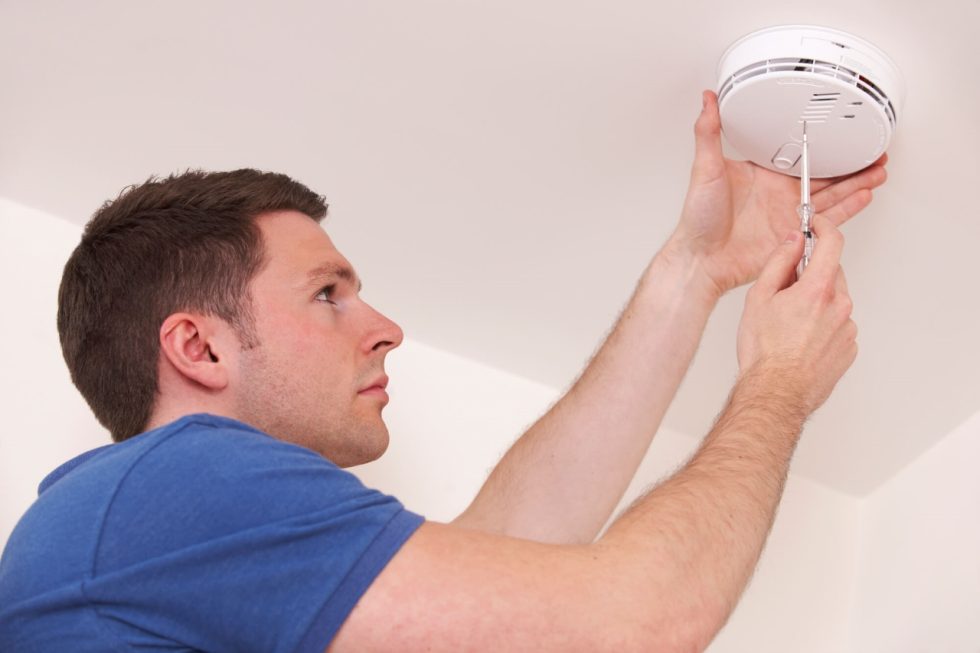As a landlord, performing seasonal maintenance on your rental property is essential to keeping it in top condition, ensuring tenant satisfaction, and reducing the likelihood of costly emergency repairs. Different seasons bring unique challenges for property upkeep, from winter-proofing to preparing for summer heat. In this guide, we’ll cover what landlords should check each season, how seasonal maintenance can help reduce emergency repair costs, and how to prepare your rental properties for harsh weather conditions.
What Landlords Should Check in Each Season
Performing seasonal maintenance helps you stay ahead of weather-related wear and tear. Here’s a breakdown of what landlords should inspect and address during each season:
1. Spring Maintenance Checklist
Spring is the perfect time for property inspections and preparing for warmer months. Focus on cleaning, repairs, and addressing any damage caused by winter weather.
- Gutters and Downspouts:
Clean out any debris accumulated during winter to ensure proper water drainage. - Roof Inspection:
Check for any loose or damaged shingles that might have been affected by winter storms. - Exterior Inspection:
Look for signs of damage to the property’s exterior, including peeling paint, cracked siding, or damaged fencing. Make necessary repairs before the summer heat arrives. - Landscaping:
Trim trees and bushes, clean up the yard, and plant new greenery if needed. Spring is also an ideal time to service outdoor irrigation systems.
Tip: Schedule a general property inspection to identify any minor issues that may have developed over the winter.
2. Summer Maintenance Checklist
Summer maintenance focuses on keeping the property cool, ensuring proper ventilation, and preparing for potential heat-related problems.
- HVAC System Servicing:
Schedule an inspection and maintenance for the air conditioning system to ensure it’s functioning properly. Change filters and clean vents to maintain airflow. - Windows and Doors:
Inspect window seals and weatherstripping to ensure there are no drafts, which can reduce energy efficiency and increase cooling costs for tenants. - Exterior Cleaning:
Pressure wash the exterior, patios, and driveways. Check for any cracks or damage in the driveway or sidewalks and repair them. - Check Pest Control:
Summer is peak season for pests, so ensure the property is pest-free and seal any potential entry points. Consider scheduling a pest control treatment if needed.
Tip: Encourage tenants to keep the property ventilated and remind them of proper air conditioning usage to prevent overloading the system.
3. Autumn Maintenance Checklist
Autumn is the time to prepare the property for colder weather. Focus on preventing heat loss, ensuring insulation, and preparing for potential winter storms.
- Heating System Check:
Have the furnace or heating system serviced. Ensure that radiators or heat pumps are functioning properly and replace any worn-out parts. - Inspect Insulation and Drafts:
Check the attic and walls for adequate insulation. Seal any drafts around windows and doors to help tenants stay warm and reduce energy bills. - Clean Gutters and Downspouts:
Clear gutters of fallen leaves to prevent water from pooling on the roof and causing leaks or ice dams during winter. - Roof and Chimney Inspection:
Check the roof for missing or damaged shingles, and inspect chimneys for any cracks or blockages. Consider having the chimney cleaned if the property has a fireplace.
Tip: Remind tenants to test smoke detectors and carbon monoxide alarms as they begin to use heating systems more frequently.
4. Winter Maintenance Checklist
Winter maintenance involves protecting the property from freezing temperatures, snow, and ice. The focus should be on keeping the property warm and preventing water damage from frozen pipes.
- Insulate Pipes:
Ensure all exposed pipes, especially those in unheated areas like basements and attics, are insulated to prevent freezing and bursting. - Snow and Ice Management:
If applicable, make arrangements for snow removal from driveways, sidewalks, and entryways to prevent slip-and-fall accidents. - Check for Leaks or Ice Dams:
Inspect the roof regularly for ice dams or water leaks. Clear away any snow buildup that could cause leaks or structural damage. - Test Heating Systems:
Ensure that heating systems are working properly, and encourage tenants to keep the thermostat at a consistent temperature to avoid freezing pipes. - Check Seals and Weatherstripping:
Make sure that windows and doors are sealed tight to prevent drafts and heat loss, improving energy efficiency for the property.
Tip: Provide tenants with tips on how to prevent frozen pipes, such as leaving taps dripping slightly during extremely cold temperatures.
How Seasonal Maintenance Helps Reduce Emergency Repair Costs
Seasonal maintenance is more than just routine upkeep—it’s an effective strategy to prevent small issues from becoming major, costly repairs. Here’s how staying proactive with seasonal maintenance helps reduce emergency repair costs:
1. Early Detection of Problems
Performing regular inspections and maintenance allows you to detect minor issues before they escalate into emergencies. For example, spotting a small roof leak in the autumn can prevent extensive water damage during winter storms.
Tip: Schedule regular property inspections at the start of each season to identify potential issues early on.
2. Prevents Costly System Breakdowns
Routine HVAC servicing in spring and autumn helps prevent system breakdowns during peak heating or cooling seasons. Maintaining these systems can extend their lifespan and save you the expense of an emergency replacement during extreme weather conditions.
Tip: Regularly change HVAC filters and schedule professional servicing to keep systems running efficiently.
3. Reduces Risk of Water Damage
Clearing gutters and downspouts in spring and autumn ensures proper drainage, preventing water buildup that can cause leaks or structural damage. Preventing frozen pipes in winter can also save you from expensive water damage repairs.
Tip: Make sure all downspouts direct water away from the foundation to prevent flooding or erosion.
4. Protects Against Tenant Injuries
Proper winter maintenance, including snow removal and de-icing, helps reduce the risk of tenant injuries from slipping on ice. This not only protects your tenants but also minimizes your liability as a landlord.
Tip: Hire a snow removal service or provide tenants with clear guidelines on handling snow and ice buildup.
Preparing Rental Properties for Harsh Weather Conditions
Preparing your rental property for harsh weather is essential for preventing damage and keeping tenants safe. Here’s how to prepare for common weather challenges:
1. Winter Storms and Freezing Temperatures
In areas prone to harsh winters, insulating pipes, sealing drafts, and ensuring the heating system is in good working order are essential steps. Stock up on salt or sand for icy walkways, and ensure that tenants have the tools they need to deal with snow and ice.
Tip: Consider providing tenants with instructions on how to prevent pipes from freezing, especially if they plan to be away during cold periods.
2. Heavy Rain and Flooding
If your property is located in a flood-prone area, it’s important to ensure the property’s drainage system is in good condition. Clear gutters and install flood barriers or sandbags if necessary to protect against rising waters.
Tip: Check the basement or ground-floor areas for leaks or signs of water damage, and make sure sump pumps (if installed) are in working order.
3. Heatwaves
In regions that experience extreme heat, it’s important to ensure that the air conditioning system is properly maintained and that windows and doors are sealed to keep cool air inside. Encourage tenants to use ceiling fans or other cooling methods to avoid overburdening the air conditioning system.
Tip: Provide tenants with tips on energy-efficient cooling, such as closing curtains during peak sunlight hours or using fans to circulate air.
Key Takeaways
- Seasonal maintenance helps protect your property year-round, with different tasks required for spring, summer, autumn, and winter.
- Routine upkeep reduces emergency repair costs by addressing potential issues early and keeping critical systems like HVAC and plumbing in top condition.
- Preparing for harsh weather conditions ensures your property is protected from extreme heat, cold, rain, or snow, and helps keep tenants safe and comfortable.
At NG Property Management, we specialize in managing seasonal maintenance for landlords to ensure their properties are well-maintained throughout the year. Contact us today to learn how we can help keep your rental property in top shape.
Disclaimer: The information in this blog is for general informational purposes only and should not be considered legal or financial advice. Please consult a professional for specific guidance on seasonal property maintenance.



